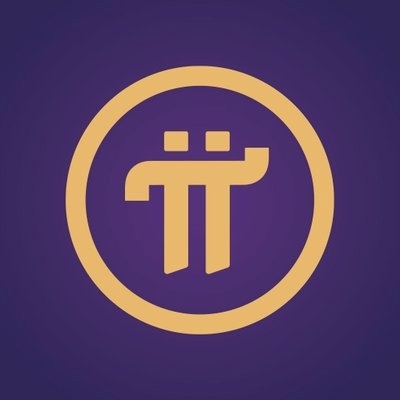What is Wrapped Solana and Why It Matters

What is Wrapped Solana: Understanding its Role in Crypto
In the fast-evolving world of cryptocurrencies, terms like Wrapped Bitcoin (WBTC) and Wrapped Ethereum (WETH) have become fairly common. Yet, one rising star that is gaining attention is Wrapped Solana (wSOL). Introducing Wrapped Solana not only encourages stronger interoperability within the blockchain ecosystem but also brings increased liquidity to decentralized applications (DApps). But what exactly is Wrapped Solana, and how does it integrate into the broader crypto landscape? Let’s take a journey to unveil the significance, functionality, and benefits of Wrapped Solana.
Solana: At a Glance
Before diving into Wrapped Solana, it’s crucial to understand its underlying asset, Solana (SOL). Solana is a high-performance blockchain supporting swift, affordable, and scalable decentralized applications. It stands out due to its innovative proof-of-history (PoH) consensus mechanism which dramatically enhances transaction speed without compromising security or decentralization. As blockchain technology matures, Solana has become a leader, providing infrastructure for the next generation of decentralized finance (DeFi) platforms.
Introducing Wrapped Solana (wSOL)
Wrapped Solana, also known as wSOL, is a token that mirrors the value of Solana on different blockchain platforms, particularly those that aren’t initially compatible with Solana's native network. In essence, wSOL broadens the horizon in cross-chain operability and taps the tremendous potential locked within various DeFi applications and ecosystems.
How Does Wrapped Solana Work?
The core of wrapped tokens involves smart contracts. To convert SOL into wSOL, users deposit their SOL tokens into a secure smart contract, which then results in the minting of an equivalent amount of wSOL tokens on another blockchain. The process is entirely reversible, allowing users to redeem their SOL tokens by burning the corresponding wSOL tokens.
The wrapping process takes Solana’s capabilities beyond its traditional boundaries and allows it to engage with platforms that support Ethereum's virtual machine (EVM), such as Ethereum itself or Binance Smart Chain (BSC). This interoperability is powered by bridging projects that manage the minting and burning of wrapped tokens across disparate blockchain networks.
The Benefits of Wrapped Solana
Enhanced Interoperability
Wrapped Solana offers unparalleled interoperability. By extending Solana's reach into other blockchain ecosystems, it allows users to effortlessly transition between ecosystems that previously would have appeared isolated. Users are now not confined to the DeFi options within Solana but can access a broad variety of services and opportunities present on other chains.
Boosted Liquidity
Liquidity is a critical component of any thriving DeFi ecosystem. Wrapped Solana invites more liquidity into the platforms that utilize it. Traders and investors holding wSOL can participate in a plethora of DeFi products across different blockchains, from lending protocols to decentralized exchanges. This multi-platform liquidity can stimulate higher volumes, better price stability, and increased market depth.
Access to Expansive DeFi Opportunities
Wrapped Solana holders can interact with a comprehensive range of DeFi protocols—and this can enhance passive income opportunities. wSOL can be used as collateral for loans, staked in yield-generating pools, or deposited into liquidity provision mechanisms.
Diversification
With the wider variety of applications available for wSOL, investors are provided the potential to diversify their investment strategies inherently. Accessing multi-chain environments means broader access to financial products beyond Solana’s native ecosystem.
Key Applications of Wrapped Solana
Cross-Chain Bridges
Wrapped Solana relies heavily on cross-chain bridges that facilitate the seamless transition of assets between blockchains. These bridges are instrumental in improving the inter-chain communication that Insolana and wrapped tokens at large require.
Decentralized Exchanges (DEXs)
In DEXs, where liquidity is king, Wrapped Solana can play a significant role. It may be paired with other cryptocurrencies in liquidity pools for enhanced trading pair options. DEXs benefit from an infusion of novel assets like wSOL, helping drive volume from interested traders across different blockchain ecosystems.
Yield Farming
Yield farming platforms can also integrate Wrapped Solana to provide users with the chance to earn interest on locked wSOL tokens. By contributing liquidity, wSOL holders may benefit from a share of the transaction fees and incentivized token distributions.
Navigating the Future of Wrapped Solana
As blockchain technology continues to evolve, the value proposition of assets like Wrapped Solana will grow ever more salient. The push towards seamless interoperability is not just a matter of convenience; it’s a critical step towards a future where blockchain serves as an underlying layer for a new world of finance and decentralized applications.
Integrating Wrapped Solana within various blockchain ecosystems and facilitating enhanced DeFi participation, whether via Bitget Exchange for trading or Bitget Wallet for secure storage and transactions, represents the next chapter in Solana’s expanding narrative. In this shared journey towards broader blockchain symbiosis, Wrapped Solana stands as a beacon of interconnected possibilities.
With innovation ceaselessly pioneering the contours of modern financial ecosystems, keeping an eye on developments like Wrapped Solana could be akin to glimpsing the future of decentralized finance. Its inception is merely the beginning of a broader financial metamorphosis, heralding a future ripe with potential for technological and economic growth.
Latest articles
See moreAbout author
I'm EtherLingo, a blockchain decoder bridging English and French. Proficient in analyzing LayerZero's cross-chain technology and the game theory behind DAO voting mechanisms in English, I also explore France's Web3 tax policies and the ecosystem building of Quebec's blockchain innovation hub in fluent French. Having worked on a cross-border carbon trading blockchain platform in Geneva and studied AI-blockchain integrations in Los Angeles, I'll unpack the global blockchain landscape behind technical jargon through a bilingual lens.
























